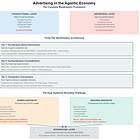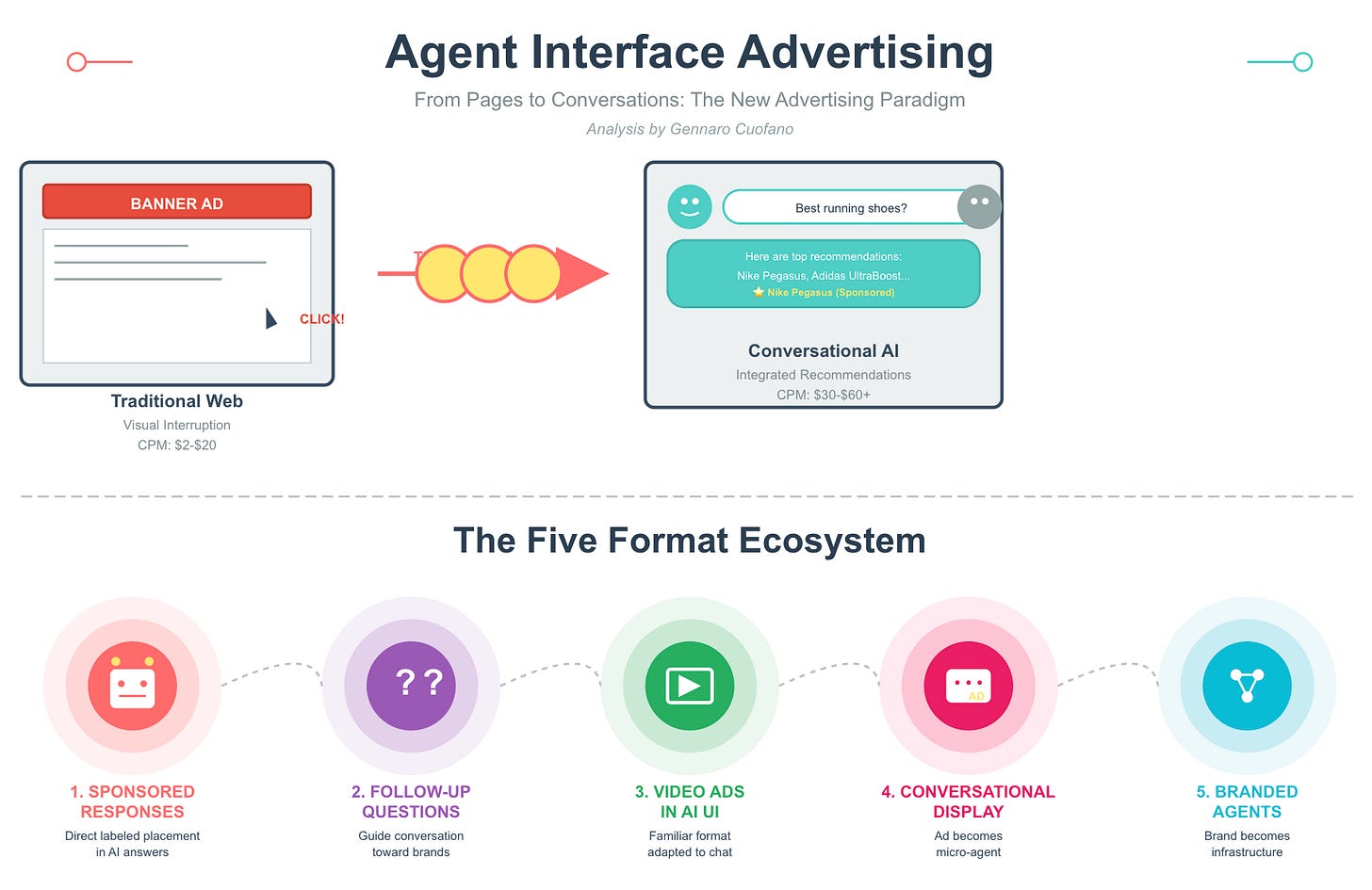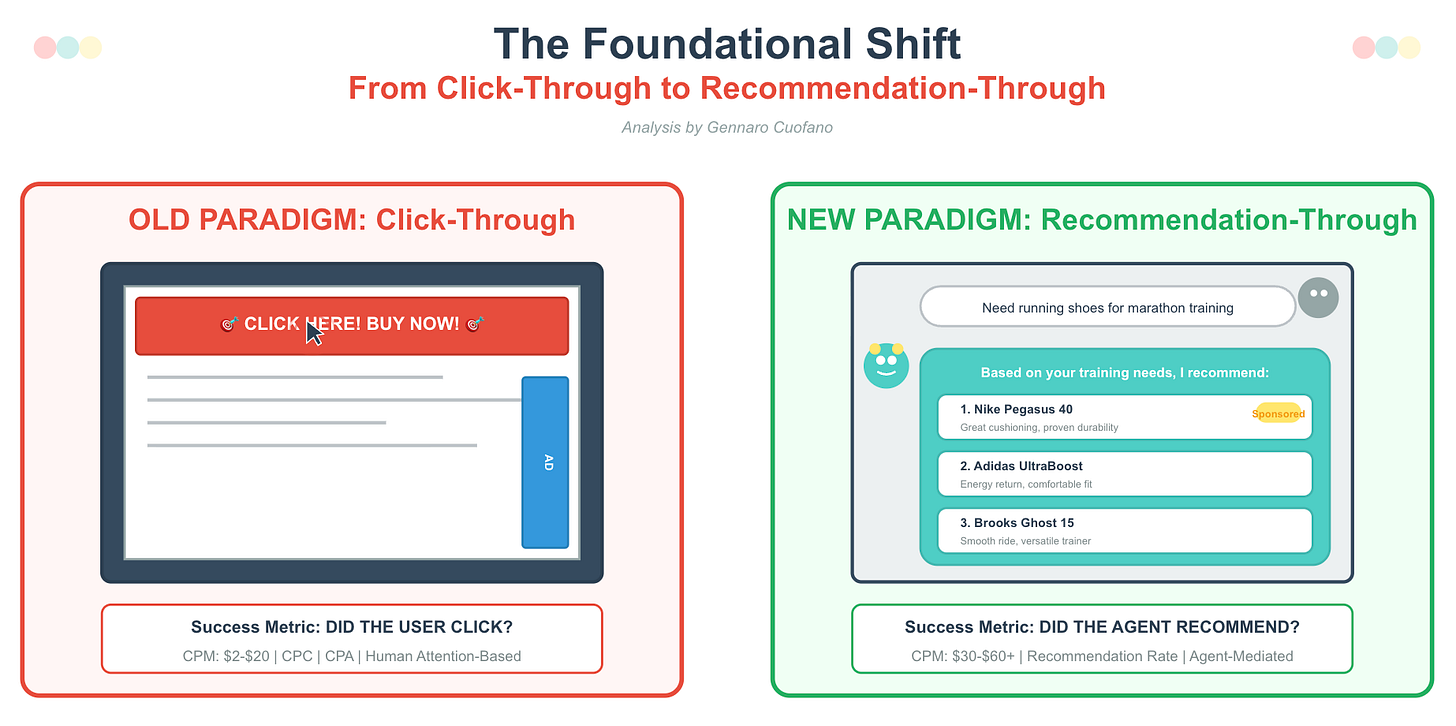Advertising in the Age of Agents
For decades, advertising operated on a fundamental assumption: humans would encounter brands through visual interruption.
Banner ads appeared in users' peripheral vision as they browsed websites. Video pre-rolls demanded attention before the desired content. Sponsored posts infiltrated social feeds. The medium changed, but the mechanism remained constant: visual real estate was purchased to capture human attention.
The agentic economy demolishes this assumption.
When users interact with AI agents through natural language, the entire advertising surface area changes. There are no banner placements to purchase, no video pre-rolls to skip, no social feeds to scroll.
Instead, there is dialogue —a continuous conversational flow in which brand exposure must be woven into the fabric of the interaction itself.
This isn’t merely a new ad format. It represents a complete reimagining of what advertising means when the interface is conversation rather than composition. The question that confronts every brand is stark: How do you advertise when the page itself disappears?
The answer lies in understanding that agent interfaces create entirely new real estate for brand exposure. In these conversational touchpoints, brands can achieve visibility, build consideration, and drive action within the natural flow of dialogue.
But succeeding in this space requires abandoning nearly every assumption from the display advertising era and embracing fundamentally new mechanics.
In this issue, I’ll speculate a bit, on what an initial phase of advertising, within the agentic ecosystem might look like.
Yet a key take here is that it will all change, initially drawing on what has existed before. Yet since AI interfaces are far more encompassing than search engines and far more personal than social media, the initial development of the advertising ecosystem will draw on both to monetize user attention, intermediated by AI. In the long run, though, agents will need their own advertising interface.




